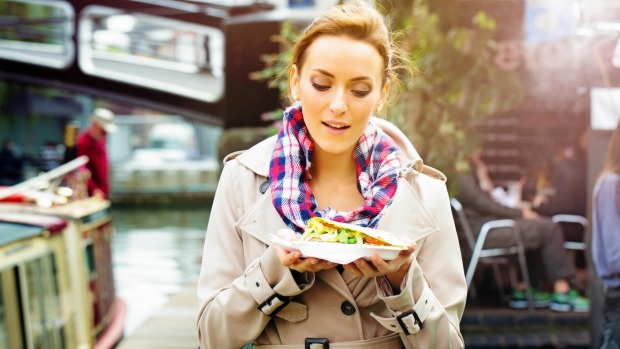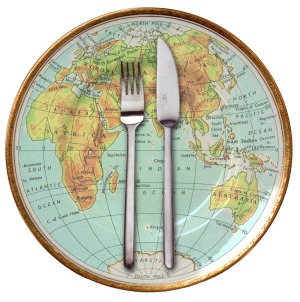
Nine restaurant bookings. I was doing a little tallying up in my head while I was at the airport a few months ago, and realised that's how many reservations I'd made for the trip to Europe I was about to embark upon.
It seemed a bit ridiculous, really. It was a month-long adventure, and I figured out I'd made four hotel bookings, one car-hire booking, three sights or museum bookings, and had locked in reservations at no fewer than nine restaurants across Spain, Italy, Belgium and Hong Kong.
These eateries ranged from three-Michelin-star fine-diners to zero-star holes in the wall. They went from refreshingly cheap to stupidly expensive. And they were all, clearly, a high priority. My three-day stop in Barcelona, for example, was set to involve one visit to La Sagrada Familia, and three meals at restaurants owned by people with the surname Adria.

Something has changed here. When did food become the sole reason for travel?
I mean, culinary culture was always there as a side benefit, a tasty little hors d'oeuvre to the main course of the jet-setting experience. You'd book a trip and then think, "Oh, and apparently they have great food there too." But all of a sudden, for plenty of us, that food is the main reason we're going.
Why do we travel? I've jetted off for plenty of reasons. I've travelled for sport. I've travelled for music, I've travelled for beer, I've travelled for festivals… And I've travelled for beer festivals.
But now, I travel for food.
And what a way to travel it is. I travel for pho, for fresh-baked croissants, for empanadas, for tapas, tacos, caramels, carbonara, thalis, rotis, ramen and mee. I travel to eat street food, to eat fancy restaurant food, and to eat everything in between.
I don't think I'm the only one, either. You just have to look at the proliferation of local food tours in cities across the world to realise what a big deal this has become. Local food bloggers are taking groups of visitors to their local restaurants. Big tour companies are including cooking classes on their itineraries.
Entire enterprises have been set up specialising in culinary tourism. There are two- or three-week tours aimed at investigating food culture by companies that have never before given it such focus.
Travellers care a lot about food. In the same way chefs are the new rock stars, food is the new tourist attraction. Restaurants are the new museums. Food trucks are the new art galleries. This is a side to a country's culture that we're only just starting to properly appreciate.
And unlike plenty of traditional tourism experiences, food travel doesn't have to be expensive. Maybe you're going to Vietnam, or Malaysia, or India, where you'll get some of the best food in the country – some of the best food in the world – for a couple of dollars. Maybe you're going to France, or Italy, or Spain, where simple market visits for fresh bread and cheese will still leave you satisfied.
Which, in a way, brings me back to that trip to Europe with nine restaurant bookings, and clearly no reliance on fresh bread and cheese from the market. This is the other way to do your food tourism: a lot of research into the best places to eat, and a lot of booking. It might sound like rigid planning, but like concert tickets or sporting events, if you want to experience the best, you sometimes have to plan ahead. Well ahead.
And so my stopover in Hong Kong involved five meals in 36 hours, including a three-Michelin-star lunch and breakfast in a grungy dim sum war zone where hungry diners ran after food carts and wrenched trays of dumplings from harassed waiters' hands. A night in Brussels was punctuated by mussels, chips, mussels and chips, and waffles. And beer. And chips.
A week in San Sebastian involved nightly pintxos tours, lunch at a cider house, a visit to one of the best restaurants in the world, a lot of Basque sparkling wine, and the purchase of one entire leg of jamon iberico. A carefully researched week in Rome was essentially a daily quest for three things: breakfast, lunch and dinner. It included market visits, restaurant feasts, and far too many negronis.
You could point out all of the things I missed out on on that trip, like going to the top of Victoria Peak in Hong Kong, or seeing the Manneken Pis in Brussels, or going to the Picasso Museum in Barcelona or the Roman Forum. And these would be fair points.
But travel has changed. Food is the main course. And there isn't always room for dessert.